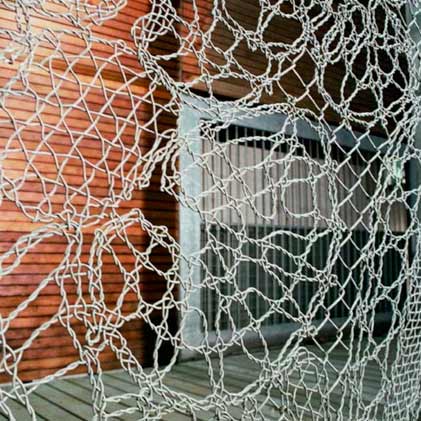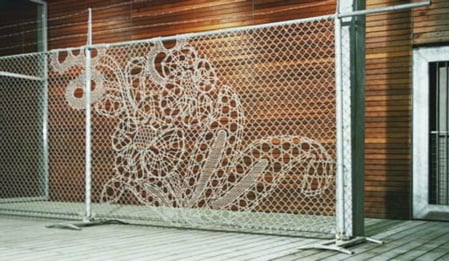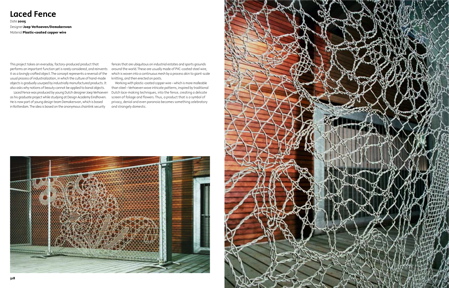
Lace Fence by Demakersvan
Twenty-First Century icons: our serialisation of chapters from dezeen editor-in-chief Marcus Fairs' book Twenty-First Century Design continues...
Lace Fence
Date 2005
Designer Joep Verhoeven/Demakersvan
Material Plastic-coated copper wire
This project takes an everyday, factory-produced product that performs an important function yet is rarely considered, and reinvents it as a lovingly crafted object. The concept represents a reversal of the usual process of industrialization, in which the culture of hand-made objects is gradually usurped by industrially manufactured products. It also asks why notions of beauty cannot be applied to banal objects.

Lace Fence was produced by young Dutch designer Joep Verhoeven as his graduate project while studying at Design Academy Eindhoven. He is now part of young design team Demakersvan, which is based in Rotterdam.
The idea is based on the anonymous chainlink security fences that are ubiquitous on industrial estates and sports grounds around the world. These are usually made of PVC-coated steel wire, which is woven into a continuous mesh by a process akin to giant-scale knitting, and then erected on posts.

Working with plastic-coated copper wire – which is more malleable than steel – Verhoeven wove intricate patterns, inspired by traditional Dutch lace-making techniques, into the fence, creating a delicate screen of foliage and flowers. Thus, a product that is a symbol of privacy, denial and even paranoia becomes something celebratory and strangely domestic.
Read an update on this story and see more images here.

Read more sample chapters here.

Buy this book at the Dezeenbooks store
(in association with amazon.co.uk)